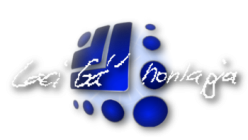getfillpattern
- Syntax
-
#include <graphics.h> void getfillpattern(char *pattern);
- Description
-
getfillpattern copies the user-defined fill pattern, as set by setfillpattern, into the 8-byte area pointed to by pattern.
pattern is a pointer to a sequence of 8 bytes, with each byte corresponding to 8 pixels in the pattern. Whenever a bit in a pattern byte is set to 1, the corresponding pixel will be plotted. For example, the following user-defined fill pattern represents a checkerboard:
char checkboard[8] = { 0xAA, 0x55, 0xAA, 0x55, 0xAA, 0x55, 0xAA, 0x55 }; - Return Value
- None.
- See also
- getfillsettings
- setfillpattern
- Example
- /* getfillpattern example */ #include <graphics.h> #include <stdlib.h> #include <stdio.h> #include <conio.h> int main(void) { /* request autodetection */ int gdriver = DETECT, gmode, errorcode; int maxx, maxy; char pattern[8] = {0x00, 0x70, 0x20, 0x27, 0x25, 0x27, 0x04, 0x04}; /* initialize graphics and local variables */ initgraph(&gdriver, &gmode, ""); /* read result of initialization */ errorcode = graphresult(); if (errorcode != grOk) { /* an error occurred */ printf("Graphics error: %s\n", grapherrormsg(errorcode)); printf("Press any key to halt:"); getch(); exit(1); /* terminate with an error code */ } maxx = getmaxx(); maxy = getmaxy(); setcolor(getmaxcolor()); /* select a user-defined fill pattern */ setfillpattern(pattern, getmaxcolor()); /* fill the screen with the pattern */ bar(0, 0, maxx, maxy); getch(); /* get the current user-defined fill pattern */ getfillpattern(pattern); /* alter the pattern we grabbed */ pattern[4] -= 1; pattern[5] -= 3; pattern[6] += 3; pattern[7] -= 4; /* select our new pattern */ setfillpattern(pattern, getmaxcolor()); /* fill the screen with the new pattern */ bar(0, 0, maxx, maxy); /* clean up */ getch(); closegraph(); return 0; }
Back to index
